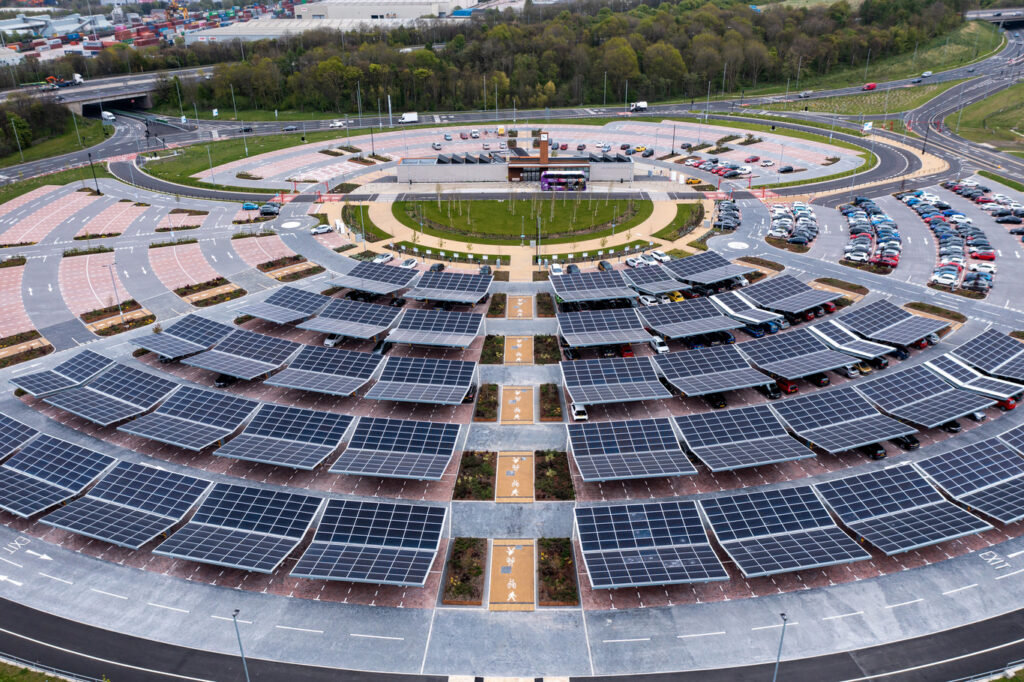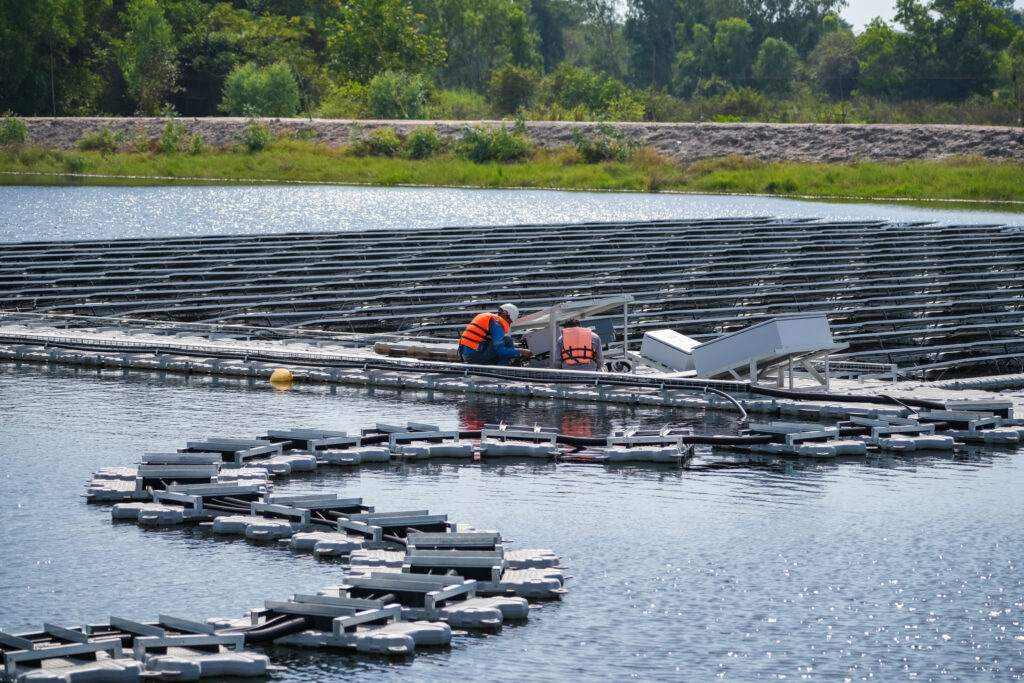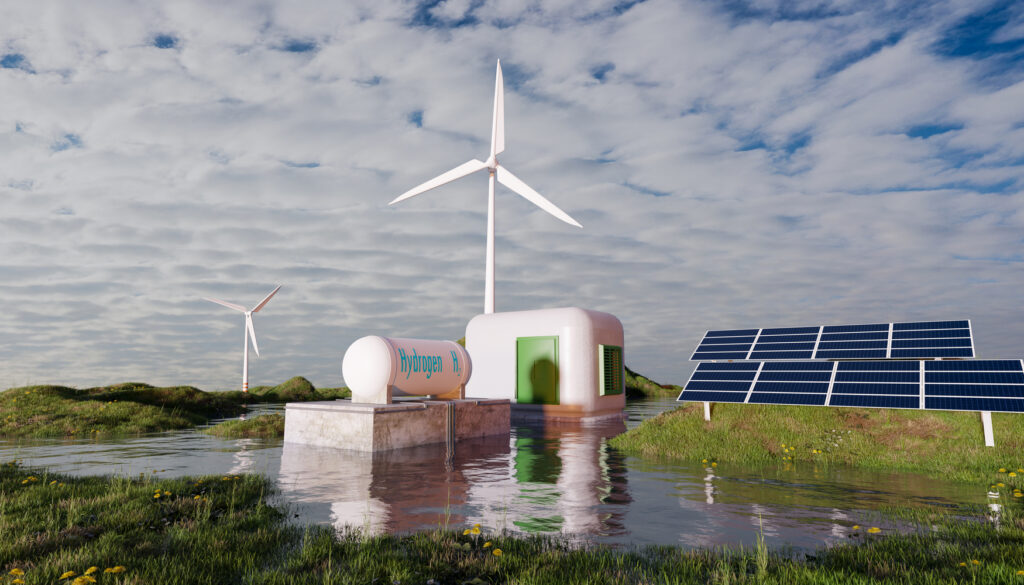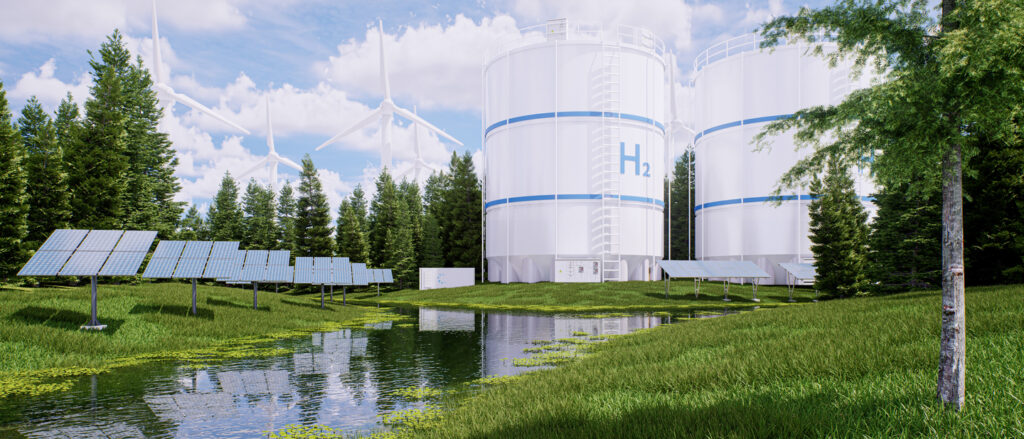Design and Development of Pilot Plants in Engineering
Energy Pilots Plants
Pilot plants represent a crucial step in the development of sustainable energy technologies. These facilities allow testing, optimization, and validation of new solutions before large-scale implementation, driving the transition toward a cleaner, more efficient, and environmentally friendly energy system. From renewable energy storage to clean energy generation, pilot plants are a key engine for innovation and sustainability.
What are Pilot Plants and Why are They Crucial in the Energy Sector?
Definition and Objectives of Pilot Plants
Pilot plants are smaller-scale facilities designed to assess the technical and economic feasibility of new technologies under controlled conditions. Their main objective is to reduce risks before large-scale implementation, allowing for process adjustments and resource optimization. These facilities are essential for energy innovation, as they provide valuable data on performance, efficiency, and sustainability.
Importance in Energy Research and Development
In the energy sector, pilot plants serve as laboratories where advanced solutions such as thermal energy storage and hybrid systems are tested. Through these trials, technologies are developed that help reduce costs, increase energy efficiency, and accelerate the adoption of renewable energies like solar and wind.
Role in the Energy Transition and Carbon Footprint Reduction
The transition to a sustainable energy model requires constant innovation, and experimental plants play a key role in this process. By testing new solutions that reduce emissions and optimize resources, these facilities directly contribute to decreasing the carbon footprint and advancing global energy sustainability goals.
Types of Pilot Plants in the Energy Sector

Pilot Plants for Energy Storage
These facilities assess energy storage technologies such as lithium batteries, supercapacitors, and hybrid systems, ensuring efficient integration of renewable energy into the electrical grid.
Pilot Plants for Renewable Energy (Solar, Wind)
In the renewable sector, these plants test innovative solutions to optimize solar and wind energy generation. A notable example is solar concentration plants with thermal storage systems.
Pilot Plants for Sensible Heat Storage in Molten Salts
These facilities investigate the use of new molten salts as a medium for storing sensible heat, a key solution for renewable energy applications due to its high thermal capacity, which allows for the accumulation of large amounts of energy at elevated temperatures. They are also ideal for solar thermal power plants and hybrid generation systems, offering an efficient and cost-effective alternative to other thermal storage methods.
Pilot Plants for Green Hydrogen Generation
Designed to develop and optimize electrolysis systems using renewable electricity, these plants are key to producing clean hydrogen from water. They represent a crucial advancement in industrial decarbonization and sustainable mobility.
Pilot Plants for Thermochemical Energy Storage
These facilities explore the use of reversible thermochemical reactions to store and release energy. This type of storage has enormous potential due to its high energy density and the ability to retain energy for long periods.
Pilot Plants for Phase Change Material (PCM) Energy Storage
PCMs offer an efficient solution for storing and releasing thermal energy. These pilot plants investigate the integration of these materials in renewable applications, ranging from heating to industrial systems.
Pilot Plants for Geothermal and Tidal Energy
Although less common, plants in this sector test the feasibility of harnessing renewable sources such as Earth’s heat and tidal movements to generate clean energy.
Pilot Plants for Carbon Capture and Storage (CCS)
These facilities research technologies to capture CO₂ from industrial sources and store it safely, significantly reducing the carbon footprint.
Pilot Plants for Synthetic Fuel Production
They test the conversion of captured CO₂ and renewable energy into synthetic fuels such as methanol or ammonia, which can replace fossil fuels in sectors difficult to electrify.
Benefits of Pilot Plants for the Energy Sector
The pilot plants or test plants represent an essential piece in the current energy ecosystem, serving as a bridge between theoretical research and practical implementation. Their multiple benefits position them as key tools for improving efficiency, reducing risks, and accelerating the development of sustainable energy technologies.
Proof of Concept and Risk Reduction
One of the main benefits of pilot plants is their ability to conduct proof of concept tests. These facilities allow for experimentation with emerging technologies under real or simulated conditions, evaluating their functionality, feasibility, and performance before large-scale implementation.
Reduction of economic and operational risks: Testing new technologies in a controlled environment minimizes the risks associated with large-scale infrastructure investments.
Mitigation of technical problems: Pilot plants allow for the identification and resolution of potential design or operational failures before making significant investments.
Validation of theoretical models: Many energy innovations depend on prior simulations; these facilities ensure that models perform as expected in real-world conditions.
Innovation in Clean Energy Technologies
Pilot plants are a driving force for innovation in clean energy technologies, providing a space to develop and refine solutions that contribute to environmental sustainability.
Energy storage testing: From advanced batteries to thermal storage and phase-change materials, experimental plants allow for the evaluation of how to optimize these technologies for efficient integration into the energy system.
Development of hybrid solutions: In a pilot energy plant, experimentation with combining different energy sources, such as solar and wind, enhances the flexibility and stability of the grid.
Acceleration of technology adoption: By demonstrating the viability of new technologies, energy pilot plants facilitate their acceptance and commercial application.
Impact on the Development of Sustainable Energy
The development of sustainable energy largely depends on the ability to test and refine solutions before deployment. Renewable energy pilot plants have a direct impact on this progress.
Reduction of carbon footprint: Technologies tested in pilot plants typically focus on minimizing CO₂ emissions, contributing to the achievement of global sustainability goals.
Boosting the energy transition: Innovations validated in these experimental facilities enable progress in replacing fossil fuel sources with renewable energy.
Generating market confidence: Energy pilot plants demonstrate the reliability and effectiveness of sustainable solutions, attracting investments and fostering collaboration across sectors.
Examples of Pilot Plants in Spain and the World
Demonstration facilities are key projects for validating innovative technologies, providing a safe space to test their functionality before commercial implementation. In Spain and around the world, these facilities are driving significant advances in solar energy, energy storage, and green hydrogen, standing out as examples of sustainability and technological innovation.

Pilot Plants for Renewable Solar Energy in Spain
Spain has established itself as a leader in solar energy projects, developing pilot solar plants that harness solar resources to generate clean energy.
Pilot Concentrated Solar Plant in Almería: The Plataforma Solar de Almería is a global benchmark in solar technologies, featuring facilities to test solar concentration systems and thermal storage.
Hybrid Solar and Storage Projects: These plants combine photovoltaic and thermal technologies to maximize energy generation and management.
Impact on the Energy Transition: These projects not only strengthen Spain’s renewable capacity but also serve as models for other countries.
Global Large-Scale Energy Storage Projects
Energy storage is crucial for grid stability and the effective use of renewable energy. Around the world, pilot energy storage plants are leading innovation in this field.
Australia and its “Big Battery”: This pilot project utilizes high-capacity lithium-ion batteries to ensure grid stability.
Pilot Plants in China: The country has developed facilities to test molten salt-based storage systems, advancing large-scale thermal energy storage management.
Global Impact: These initiatives lay the foundation for replicating efficient and sustainable solutions in different regions.
Green Hydrogen Plant Initiatives
Green hydrogen is emerging as a key energy vector, with pilot plants designed to explore its production, storage, and use.
European Projects: Spain, Germany, and the Netherlands are leading the development of pilot electrolysis plants, using renewable energy to produce green hydrogen.
Industrial Impact: These plants enable industries such as steel production and heavy transport to reduce their carbon footprint, significantly contributing to decarbonization.
Notable Cases: Projects like “HyEx” in Chile combine green hydrogen pilot plants with renewable energy for both export and local use.
RPow’s Thermal Energy Storage Pilot Plant
RPow has played a key role in developing innovative pilot plants. A notable example is its contribution to the Iberian Center for Energy Storage Research (CIIAE) project, where they are implementing a cutting-edge thermal energy storage pilot plant.
Advanced Technology: This project integrates molten salt storage, phase change materials, and adsorption materials in a modular design, maximizing thermal energy management efficiency.
Objective: To validate technologies that enable large-scale renewable energy storage, contributing to grid stability and energy system decarbonization.
Impact: This initiative serves as a model of collaboration between research and industrial development, aligning with European sustainability goals.
For more information about this plant, we recommend visiting the following pages:
RPow Project Reference: https://rpow.es/es/epc-de-la-planta-piloto-de-almacenamiento-termico-en-las-instalaciones-del-ciiae-2/
Helioscsp Article: https://helioscsp.com/rpow-construira-planta-piloto-de-almacenamiento-termico-para-el-ciiae-en-caceres-bajo-el-plan-de-transformacion-recuperacion-y-resiliencia/
El Confidencial Article: RPOW to Develop a Pioneering Thermal Storage Research Plant.
Future Trends in the Development of Pilot Plants
Pilot plants, fundamental for innovation across multiple sectors, are evolving to adapt to future technological, environmental, and social challenges. Below, we explore the key trends that will shape the development of these facilities in the coming years:

Trends in Pilot Plants for Renewable Energy and Sustainable Power Generation
El desarrollo de plantas piloto enfocadas en energías renovables y sostenibilidad está avanzando a gran velocidad, marcando el camino hacia un futuro más limpio y eficiente. Algunas de las tendencias más destacadas incluyen:
Development of Advanced Energy Storage Systems
New battery technologies: Experimental plants are testing solid-state batteries, flow batteries, and other alternatives to lithium-ion batteries.
Thermal storage: Projects using phase-change materials or molten salts to store heat, maximizing energy efficiency.
Hybrid solutions: Combining thermal and chemical storage to ensure a steady supply of renewable energy.
Optimization of Solar and Wind Power Plants
Integration of smart technologies: Use of artificial intelligence and machine learning to maximize energy production under changing conditions.
Modular and scalable designs: Demonstration facilities are testing more flexible configurations that can be adapted to different scales and locations.
Innovative solar panels: Advances in bifacial and perovskite panels, tested in pilot facilities.
Green Hydrogen Production
Efficient production: Hydrogen pilot plants focus on developing more cost-effective and durable electrolyzers.
Storage and transport: Innovations in compression, liquefaction, and safe hydrogen storage.
Integration with other energy sources: Pilot systems that combine green hydrogen with solar and wind power to improve grid stability.
Offshore Pilot Plants
Offshore wind energy: Pilot facilities testing floating turbines and other advanced solutions to harness maritime energy resources.
Hybrid offshore systems: Combination of wind energy, floating solar, and marine storage in experimental projects.
Carbon Capture and Utilization (CCU)
Sustainable pilot plants: Innovations integrating carbon capture in renewable plants for industrial reuse or geological storage.
Synthetic fuel production: Using captured CO₂ combined with green hydrogen to create sustainable fuels.
Smart Grids and Microgrids
Distributed management: Pilot plants are testing how microgrids and smart networks can efficiently integrate renewable energy.
Decentralized storage: Pilot solutions demonstrating the viability of self-sufficient energy systems for small communities.
These trends position renewable energy pilot plants as an essential pillar in the transition to a more sustainable and cleaner energy system, allowing the validation and scaling of disruptive technologies.
Integration of Artificial Intelligence and Big Data
The incorporation of advanced technologies such as artificial intelligence (AI) and large-scale data analysis is revolutionizing the management and optimization of pilot plants.
Outcome prediction: These tools enable scenario simulation, anticipating problems and optimizing design before physical implementation.
Real-time monitoring: AI facilitates continuous supervision, improving operational efficiency and reducing costs.
Automation: From production to validation processes, pilot plants are adopting intelligent systems to maximize productivity.
Modular Design and Scalability
A modular approach is emerging as a key trend in pilot plant design.
Adaptability: Modules allow for quick adjustments to test different configurations or technologies.
Ease of scaling: Modular facilities simplify the transition from pilot testing to full-scale production.
Resource optimization: This design minimizes material usage and reduces development times.
Focus on Sustainability and Circular Economy
The commitment to sustainability is redefining the purpose and methodology of pilot testing facilities.
Use of sustainable materials: New facilities prioritize recyclable materials and low-impact processes.
Waste valorization: Pilot plants in sectors such as food and chemicals are leading projects that transform waste into new products or energy.
Minimizing carbon footprint: Technologies are being developed to assess and reduce the environmental impact of tested processes.
Collaborative and Multisectoral Pilot Plants
Joint efforts between different industries and research centers are resulting in more complex and comprehensive pilot projects.
Shared innovation: Collaboration between companies, universities, and governments accelerates the development of disruptive solutions.
Cross-sector applications: Experimental plants combining technologies from fields such as biotechnology and energy are driving new business models.
Shared infrastructure: In some countries, research centers provide open pilot plants for joint use, maximizing available resources.
Digital Twins
Digital twins—virtual replicas of real pilot plants—are transforming how these facilities are designed, tested, and optimized.
Advanced simulation: Allows experimentation with multiple variables without the need to physically build each option.
Predictive analysis: Helps identify failures before they occur in the real environment.
Cost reduction: Lowers expenses associated with extensive and repetitive physical testing.
These trends highlight the transformative role of pilot plants not only in the energy sector but also in fields such as biotechnology, advanced manufacturing, and sustainability, positioning them as leaders in global innovation.
Frequently Asked Questions About Pilot Plants in Energy

What types of pilot plants are most common in the energy sector?
Thermal energy storage pilot plants, green hydrogen generation pilot plants, and hybrid energy system pilot plants are among the most common, standing out for their role in developing and validating new sustainable technologies.
How are pilot plants for renewable energy financed?
They are funded through a combination of government funds, research grants, public-private partnerships, and contributions from energy sector companies interested in innovative technologies.
What are the main challenges in developing a pilot plant?
Challenges include securing initial funding, regulatory compliance, selecting suitable technologies, integrating with existing systems, and overcoming resistance to change in traditional sectors.
What advantages do pilot plants have over full-scale testing?
They allow controlled testing at a lower cost, identifying issues before investing in large-scale projects. Additionally, they offer flexibility to experiment with different technologies in a safe environment.
How long does it take to develop a renewable energy pilot plant?
The timeframe varies depending on project complexity, ranging from months to several years. Factors such as the technology used, location, and regulatory framework influence timelines.
What impact do pilot plants have on the energy industry?
They drive innovation, reduce risks in project scaling, and accelerate the adoption of sustainable technologies, positively impacting the global energy transition.
What role do pilot plants play in the energy transition?
They are essential for testing and optimizing technologies that help decarbonize industry, integrate renewable energy, and improve energy efficiency in various processes.
Are there specific regulations for developing pilot plants?
Yes, pilot plants must comply with local and international regulations regarding safety, environmental impact, and operational standards to ensure sustainability and technical viability.
How are results measured in a pilot plant?
Specific metrics such as energy efficiency, emission reductions, operating costs, and overall performance are used to evaluate the project’s success.
Renewable
Power Onwards
Engineers with more than 20 years of experience
